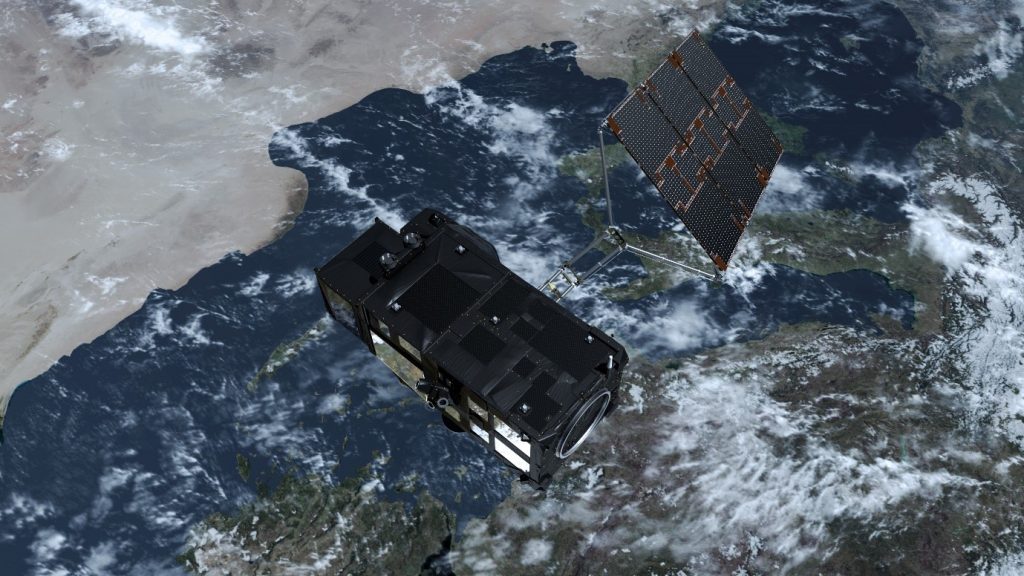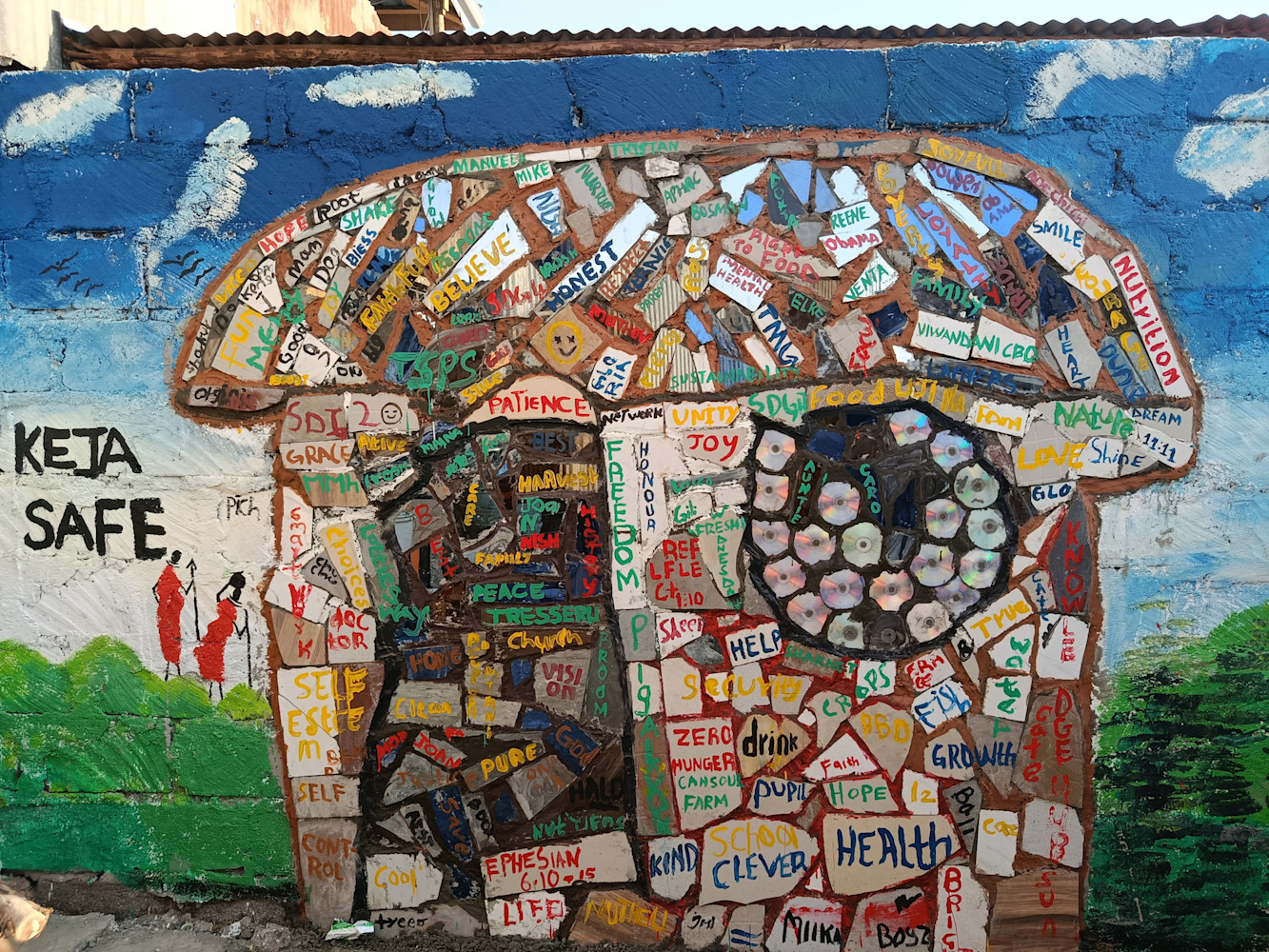Building better resilience to desert locust and other transboundary threats amid the climate crisis
A plaidoyer for a paradigm shift on handling crises
by Dr Adam Prakash and Dr Elena Lazutkaite | 2022-02-24

“The Horn of Africa is facing the worst desert locust crisis in over 25 years, and the most serious in 70 years for Kenya. The current situation […] is set to become a regional plague […] which represents an unprecedented threat to food security and livelihoods in the region and could lead to further suffering, displacement and potential conflict.” Food and Agriculture Organization of the United Nations (FAO, 2021)
The statement from the Food and Agriculture Organisation of the United Nations (FAO) may have been regarded as alarmist at the time it was published. However, there is widespread consensus that desert locust outbreaks, and for that matter, other transboundary pest threats, will be much more common with a rapidly changing climate. They are expected not only to be more frequent, but more intensified and potentially transcending to other regions. Researchers suggest that global warming has already influenced this outbreak. The roots of the ongoing upsurge lie in unusually high temperatures in the Indian Ocean and consequently the Arabian Peninsula being struck by multiple severe cyclones between 2018 and 2019. When cyclone Mekunu hit the Arab peninsula in May 2018, it filled a vast desert in Saudi Arabia — Rub al Khali, also known as the “Empty Quarter” — with freshwater lakes and provided desert locusts with optimal breeding ground. Uncontrolled generations of breeding ultimately led to swarms the size of Luxembourg having been witnessed in Kenya.
Increasing episodes of drought and heat stress thanks to climate change are already placing smallholders at risk, and transboundary pest outbreaks could be the near-term tipping point for the devastation of rural livelihoods, population displacement and potential conflict.
The need for early action
The last major desert locust incursion happened in West Africa almost two decades ago. Such long “recession” phases unfortunately result in unpreparedness to swiftly respond to an unfolding crisis. This has been reflected in shortcomings of the international governance mechanism to enact upsurge prevention measures, including the lack of early action (despite huge advances in technology in early warning systems), a lack of communication and scant intra-regional coordination, resulting in afflicted countries to “go it alone”. When the full-blown crisis materialised, countries had no option but to resort to a last line of defence. This meant unleashing unparalleled quantities of highly toxic pesticides (organophosphates) into the already fragile environment, potentially wiping-out biodiversity and ecosystems and contaminating water and land resources, not forgetting the risks to human health posed by nerve agents — the active ingredient in the chemical pesticides applied.
Learning the lessons
TMG Research has just released a scoping paper on the current desert locust crisis, providing an objective enquiry into all of the dimensions of the crisis. These include its origins and impacts as well as the conclusions stemming from independent evaluations of the responsiveness and governance of early warning systems, which analysed the communication and coordination of countries’ responses to the crisis. In light of this evidence, the scoping paper advocates a paradigm shift — a new mindset — for handling locust crises and other transboundary threats, given that the decades-old status quo model has failed to demonstrate readiness and early action.
Resilience — digitalisation — governance
An important step in changing mindsets is to expose the “true costs” of the current desert locust campaign, not just the fiscal costs of pesticide interventions, but also the prohibitive costs to the environment and human health caused by such harmful pesticides. In other words, this is about making the invisible costs visible. Once monetised, a compelling case can be presented to actors of the multilateral system to create better global governance and invest in the underpinning early warning, prevention and control systems. The aim is that harmful pesticides (especially organophosphates such as chlorpyrifos, which is a potential persistent organic pollutant, also referred to as a “forever chemical”) would eventually be relegated to redundancy.

Artist’s impression of Sentinel-3, a part of the Copernicus Earth observation series of satellites. Credit: Credit: ESA/ATG medialab.
A prerequisite for upsurge prevention is the development of the best possible early warning and early action system. In the case of desert locusts, a system could harvest available data from existing sources (improved satellite data, weather intelligence systems) that would then be fed to machine learning (ML) algorithms to help predict and destroy breeding grounds. It could further be supported by innovative technology such as drones fitted with soil-penetrating sensors to identify egg pods and subsequently deploy robotics to excavate the breeding sites. These processes would all be implemented under the auspices of early action and avoidance of the use of highly toxic pesticides.
Such an early warning and action system necessitates a new type of global governance model, including forming international public private partnerships (PPPs) with service providers such as research institutions responsible for technological innovation and digitalisation. There already exists a class of “impact investors” — Environmental, Social and Governance — who invest in global public goods for incentives that do not necessarily concern market returns. These partnerships are to be realised with the objective of safeguarding global public goods towards building better resilience. The global governance model would foster rapid communication, coordination and action between countries to thwart the risk of outbreak.
TMG is moving forward
TMG has started to initiate partnerships to enable this paradigm shift. Our session at the Global Landscapes Forum Climate Conference (a sideline event to COP26) — hosted by TMG, the German Federal Ministry for Economic Cooperation and Development, the Intergovernmental Authority on Development (Nairobi, Kenya), and the Swette Center for Sustainable Food Systems (Arizona State University) — was dedicated to the ongoing desert locust upsurge and its interconnectedness with the climate crisis. The event brought together ten prominent speakers from a wide range of disciplines and countries to dissect the ongoing crisis and to pave the way forward.
Panelists from some of the hardest-hit countries, namely Ethiopia and Kenya, concurred that the ongoing desert locust crisis warrants scrutiny on many grounds. The panel uniformly agreed that current control strategies are no longer tenable. This session successfully demonstrated the need of research partnerships linking global research with regional and local partners, within the realm of global governance.
The ongoing upsurge shows that it is more than necessary to put emphasis on the much-needed political will towards establishing a well-functioning early warning system and early action able to integrate the challenges of climate change, bring resilience into the picture and define the needed actions jointly with all stakeholders. Such endeavor can have the potential to optimise crisis prevention and management systems, so that the world is better resilient towards future outbreaks of locusts and other transboundary pests.
Read the publication “A Scoping Paper on the Ongoing Desert Locust Crisis 2019–2021+”.
Cover picture: Locust swarms in Isiolo County, Kenya. Credit: FAO.
 Land GovernanceDec 18, 2025
Land GovernanceDec 18, 2025Land tenure, women’s land rights, and resilience: Reflections from CRIC23 toward UNCCD COP17
Our experts discuss what the exchanges at CRIC23 highlighted and revealed about the role of secure and gender-equitable land tenure in the UNCCD's work ahead of the 2026 triple COP year.
Frederike Klümper, Washe Kazungu
 Urban Food FuturesDec 09, 2025
Urban Food FuturesDec 09, 2025The story of Mukuru's Urban Nutrition Hub
In Mukuru informal settlement, a safe haven for women has grown into the Urban Nutrition Hub, a multi-purpose space for nutrition education, training, and community development, demonstrating the potential of grassroots community-owned innovation..
Serah Kiragu-Wissler
 Urban Food FuturesSep 29, 2025
Urban Food FuturesSep 29, 2025Cheaper food, higher costs: The paradox of Nairobi’s food systems
What are the hidden costs of foods sold in Nairobi's informal markets, and who must bear them? We discuss how the city could build food systems that are both affordable and fair—for consumers and the people who feed them.
Christian Sonntag, Emmanuel Atamba, Lumi Youm

